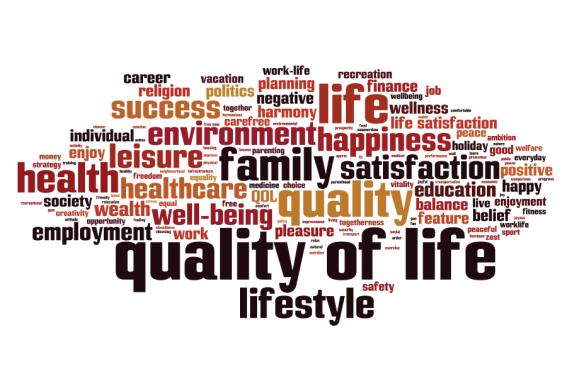Quality of Life Indicators as Performance Measures
April 7, 2021
Prof. Muzzo Uysal has been working in the area of quality of life and its connection to tourism and hospitality settings for a long time. One of his recent research articles with Prof. J. Sirgy makes an argument that quality of life (QoL) indicators can also be treated as performance indicators, independently or nested forms with conventional indicators in tourism.
It is commonly accepted that performance indicators are an important tool for destination development and management. These indicators may be defined as sets of information used to measure changes in specific aspects of tourism destinations and operations. Most of the performance indicators–economic, social, or environmental–are also intertwined with QoL issues directly or indirectly.
The concept of performance measures or key performance indicators (KPI) in the tourism and hospitality discipline is certainly not new. As international travel has become increasingly more convenient and affordable, countries as tourist destinations have managed to monitor the number of arrivals, expenditures by visitors, and hotel occupancy. Such statistics serve to monitor market demand in relation to other countries. As such, the industry now has a long tradition in the use of benchmarking through ratio analysis (e.g., operating ratios, profitability ratios, activity ratios, and employee ratios). These benchmarks are used to compare performance against external industry data (such as Smith Travel Research - STR reports) or destination competitiveness (such as World Travel and Tourism - WTTC tourism competitiveness index).

Regardless of studies and locations, the development of tourism indicators seems to follow a structured approach. First, the research and organization define the destination and its vision, identifies its important tourism assets and evaluates the situation at hand. Then, the indicators are developed based on salient issues of the study area. Based on the selected issues (e.g., environmental impacts of tourism development, QoL of stakeholders, destination competitiveness), data are collected, and indices are developed. In some cases, more measures are introduced to represent the same indicator dimensions, or several indicators are used to represent a specific issue. The third stage is the implementation of indicators with their defined measures. The indicators are evaluated to decide what new processes should be established to make improvements. More data are generated over time as these procedures are put into place, and based on the data, corrections and revisions are made for improvement. In addition, benchmark standards and norms are established internally or based on external measures and comparisons.
Although the scope of stakeholders varies from place to place and may include such groups as government employees, elected officials, special interest groups, destination management and marketing organizations (small or large), the study identifies and describes QoL indicators in tourism and hospitality in terms of three key stakeholders, namely tourists, residents of host communities, and employees of hospitality firms. Further, the study offers examples of indicators for each of the three groups.
Further information on this study:
Uysal, M & , M.J. (2019). Quality of life indicators as performance measures, Annals of Tourism Research 76 (2019) 291–300
https://www.sciencedirect.com/science/article/abs/pii/S0160738318301464
Designing for Quality of life
There has been substantial interest in examining the connection between tourism as a socioeconomic force and quality of life. Similarly, designing places as smart destinations to enhance the experience is now an important area of research and application. The study by Uysal, Berbekova, and Kim (2020) argues that designing for tourism is intimately related to the enhancement of quality of life; that is, designing appropriate platforms for tourism experience settings with its actors will contribute not only to the wellbeing of participants but also improve the livability of places as destinations. Their work outlines a conceptual framework with seven propositions that links tourism design and key elements of quality of life.
- Designing for quality experience to improve the wellbeing of stakeholders in the production and consumption of tourism engagement should follow a systems approach incorporating both the demand and supply side of tourism.
- The active engagement between destinations and tourists as resource integrators in different settings is essential to enhance quality experiences and satisfaction with QOL.
- The nature of the tourism experience depends not only on the availability of resources but the configuration of both operand and operant resources that juxtapose in the setting.
- Operant resources need to be configured with operand resources in a way that would influence desired outcomes of experience and appeal to higher-order needs of tourists as consumers.
- The use of technological tools and platforms remains an important element in designing and delivering a quality experience that enhances one's sense of wellbeing.
- Satisfaction with quality or co-created tourism experience can be moderated by positive emotions and consequently lead to higher subjective wellbeing.
- A supply-demand interaction system allows destinations to be carefully designed to serve as facilitators of experience creation and matched with present and potential visitors.

These seven propositions provide an essential foundation for designing tourism experience settings that contribute to travelers' quality of life by integrating the concepts of co-created/quality experience, operant and operant resources, the importance of technology, motivation, involvement, and emotions within the frame of supply-demand interaction. It is hoped that this conceptual framework with its elements would offer guidance to destination and community planners, managers and decision-makers while pointing to future research areas.
Further information on this study:
Uysal, M., Berbekova, A., & Kim, L. (2020). Designing for Quality of life, Annals of Tourism Research, Vol 83, July 2020, 102944
https://www.sciencedirect.com/science/article/abs/pii/S0160738320300888